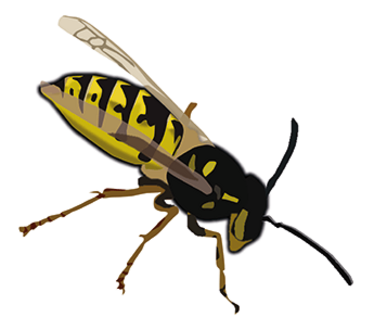Wasps Versus Cancer
Do Brazilian wasps hold the promise of a new anticancer therapy? The answer is in the sting
Researchers have known for some time that Polybia paulista wasp venom contains an ingredient that selectively kills some cancer cells, but the big mystery is how exactly the agent works. Motivated to investigate the venom further, Paul Beales, a senior research fellow at the University of Leeds, and João Ruggiero Neto, a professor of physics at São Paulo State University, Brazil, believe they have uncovered a molecule with a mechanism of action that is distinct to any current anticancer drug (1). We spoke to Beales to learn more about the science behind the sting.

How did the project get started?
We already knew that a membrane protein called MP1 isolated from wasp venom had anticancer properties, but we did not understand how it worked until now. MP1 is an antimicrobial peptide that selectively disrupts the bacterial cell membrane. The action of MP1 hinges on the composition of two lipids, phosphatidylethanolamine (PE) and phosphatidylserine (PS). These lipids are normally located inside the membrane, but in cancer cells they are often found on the outer membrane where they are “visible” to the cell’s environment. We engineered model membranes that contained neither, one, or both lipids to study the MP1’s mechanism using an arsenal of biophysical spectroscopic and imaging techniques.
What were the most surprising findings?
Both PS and PE lipids are important for MP1’s ability to disrupt membranes. PS increases the binding of MP1 to the membrane, whereas PE makes it easier for MP1 to disrupt it. I think we were most surprised by just how significant the effect of PE was.
What were the most surprising findings?
Both PS and PE lipids are important for MP1’s ability to disrupt membranes. PS increases the binding of MP1 to the membrane, whereas PE makes it easier for MP1 to disrupt it. I think we were most surprised by just how significant the effect of PE was.
What are the potential advantages?
No anticancer drug selectively targets the differences in the membranes of cancer cells, so this would be a completely new mode of action for an anticancer drug and could be useful for combination therapies. What’s more, by disrupting the membrane this may also “open the door” for other drugs with intracellular targets inside the cancer cell, giving them easier and faster access to their targets.
Now that we think we understand its mechanism of action, it will be interesting to design modifications to MP1’s structure aimed at increasing its selectivity and potency to cancer cells.
How do you see the area of synthetic biology fitting into this research?
Re-engineering cells or creating synthetic biochemical nanoreactors to synthesize and secrete the peptide in situ could provide countless opportunities to develop novel therapies. I like the idea of smart synthetic cells that detect disease biomarkers and respond by synthesizing and releasing appropriate drugs in response. This is a “hot topic” in my research group; it’s a bit like science fiction at the minute, but it will be interesting to see how far developments in synthetic biology can take us in that direction.
- J. Ruggiero Neto et al., “PE and PS Lipids Synergistically Enhance Membrane Poration by a Peptide with Anticancer Properties”, Biophysical Journal, 109, 936-947 (2015). DOI: 10.1016/j.bpj.2015.07.033



















